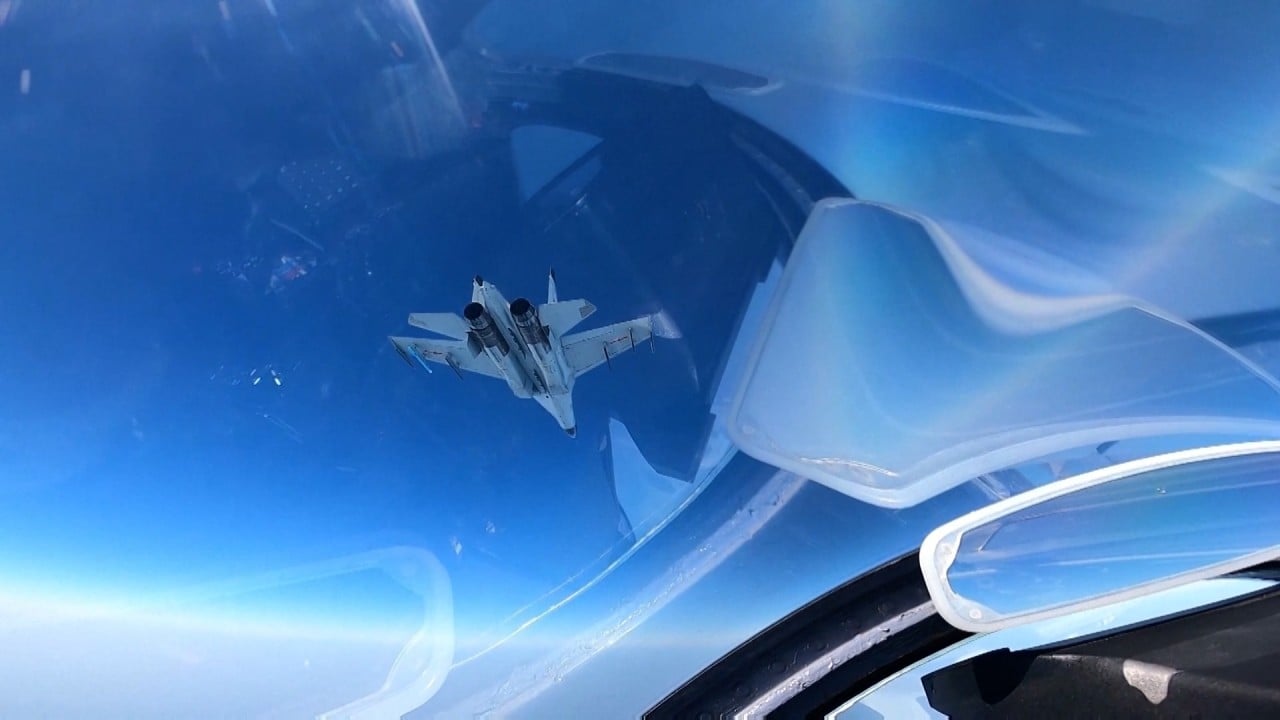
Chinese bombers in strike exercises after US escalation in South China Sea
- Advanced H-6J among at least 10 planes involved in drills which followed February dual carrier operation in disputed waterway
- On Wednesday a US destroyer crossed the Taiwan Strait in a further escalation of tensions
Military experts said the exercises – which involved the Chinese navy’s most advanced H-6J bomber – aimed to show China’s capability of countering recent US activities, which included dual carrier operations in February.
One day after state broadcaster CCTV revealed details of the PLA exercises, a US destroyer transited the Taiwan Strait, further ratcheting up tensions in the region.
Beijing under more pressure over South China Sea but conflict ‘unlikely’
The drills featured long-distance attack exercises and boosted coordination between new and veteran pilots, the CCTV report said. In a follow-up report on Wednesday, CCTV said a naval aviation brigade from Southern Theatre Command had practised air confrontation tactic drills to sharpen real-combat capability.
Yue Gang, a retired PLA colonel, said the exercises aimed to counter recent US operations. In February these included dual operations by US aircraft carriers Theodore Roosevelt and Nimitz, along with their strike groups, in the South China Sea.
“This is to show that the Chinese military is capable of countering and closely following what the US is doing, and that it is in control of the situation,” he said. Yue added that the PLA could also deploy other resources, including rocket forces, to boost deterrence against the US, if necessary.

01:37
China’s PLA conducts air force drills after US warships sail in contested South China Sea
On Wednesday, the Arleigh-Burke-class guided missile destroyer USS Curtis Wilbur, went through the Taiwan Strait to demonstrate “the US commitment to a free and open Indo-Pacific,” according to a statement from the US Seventh Fleet. “The United States military will continue to fly, sail and operate anywhere international law allows,” it added.
Zhang Chunhui, a spokesman for the PLA’s Eastern Theatre Command, said naval and air forces had been deployed to follow and monitor the destroyer. “Theatre troops remain on high alert and are ready to counter all threats and provocations at any time.” He said the destroyer’s transit “deliberately” added to risks in the Taiwan Strait and undermined peace and stability.
South China Sea: the dispute that could start a military conflict
Song Zhongping, a former PLA instructor who is now a Hong Kong-based military affairs commentator, said the Chinese bomber drills were targeting both the South China Sea and Taiwan.
“If there was military conflict in Taiwan, then the South China Sea would definitely be involved. The navy in Southern Theatre Command would be deployed for Taiwan,” he said.
According to Song, an important aspect of the exercises was the integration of China’s new and older generation bombers, to boost combat capability. “The training should not just focus on the new bombers, but also on improving the capability of the older ones,” he said.

02:32
Washington’s hardened position on Beijing’s claims in South China Sea heightens US-China tensions
“The two types of fighters can form a joint force. We cannot just rely on new bombers in a military conflict as they are small in number.”
Beijing has repeatedly protested US military operations in the South China Sea and Taiwan Strait, accusing the US of violating its sovereignty and stoking tensions.
As the US seeks to rebuild its alliances in a bid to counter China, more nations have taken part in South China Sea operations. Last week, France sent amphibious assault ship Tonnerre and frigate Surcouf through the disputed waterway on the first of two planned transits. Germany and Britain have also said they will send naval vessels to the region.
Additional reporting by Kristin Huang

